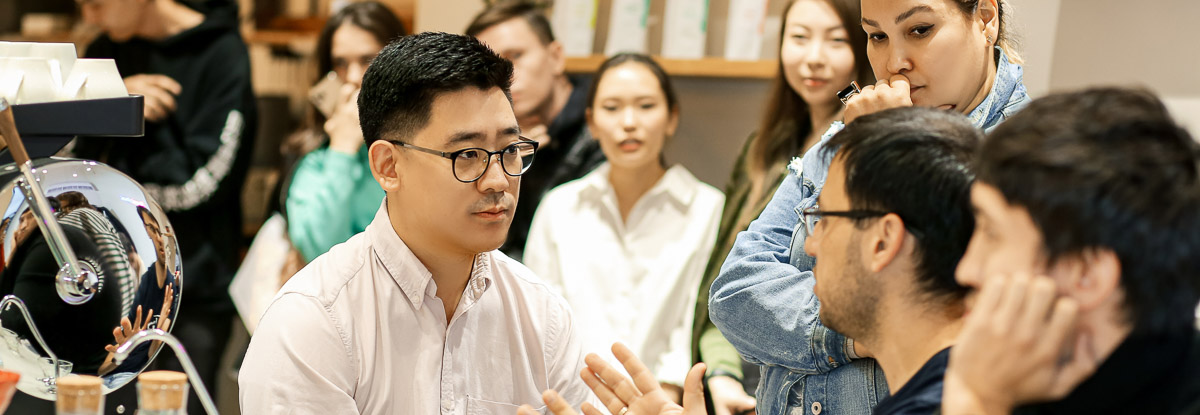How is coffee culture changing in Kazakhstan?
Located in Central Asia and partly in Eastern Europe, Kazakhstan is the world’s ninth-largest country by land area. Despite its size, however, the country has one of the lowest population densities in the world, with fewer than six people per square kilometre (or 15 people per square mile).
Historically, Kazakhstan is a tea-drinking nation – which is largely attributed to Russian influence. But in recent years, coffee consumption has been on the rise, too. According to Statista, the country’s coffee market will grow by 6.58% year-on-year by 2025. Moreover, since 2020, Kazakhstan’s roast & ground market has been increasing as well – and is expected to surpass sales of instant coffee within the next two years.
Since becoming independent in 1991, the country has experienced rapid economic growth – largely thanks to a huge spike in its oil and natural gas exports. And as its middle class has grown, more people have started to consume higher-quality coffee across the country.
But just how popular could Kazakhstan’s specialty coffee culture become in the next decade or so? I spoke to several local coffee professionals to find out.
You may also like our article on whether Nepal will produce more specialty coffee in the future.
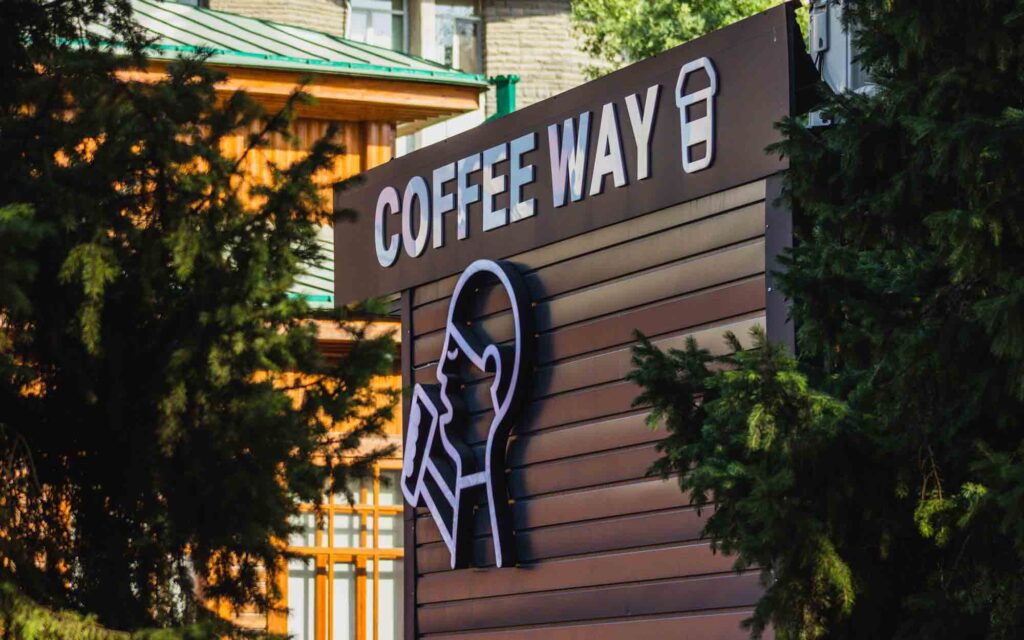
A brief history of coffee in Kazakhstan
Stanislav Tyan is the owner of Massimo Coffee Roasters in Almaty – the largest city in Kazakhstan. He is also a certified Q grader.
“It’s difficult to know exactly when coffee first arrived in Kazakhstan,” he explains. “But it’s believed that Arabic and Turkish traders probably brought coffee into the country through the Silk Road.”
The Silk Road was a network of trade routes between Europe and Asia, which were active up until the mid-15th century.
“When Kazakhstan was still a part of the Soviet Union, coffees from India were available to buy, but were considered a highly-prized commodity,” he adds. “We used to buy instant coffee which came in a metal tin, but for most people, it was difficult to buy even one tin – you needed to have good connections to buy coffee.”
Fast forward to the late 2000s and 2010s and this was certainly changing. Following the country’s rapid economic growth, more and more coffee chains began to open in Kazakhstan. Some of these included:
- Gloria Jeans’ Coffee
- Shokoladnista
- Traveler’s Coffee
- Costa Coffee
- Starbucks
During this time, it was clear that coffee was steadily becoming accessible to more people, and that it was becoming more popular. These coffee shops became important spaces for people to meet and socialise – a sign that the “third place” was becoming more prominent in Kazakh coffee culture.
Along with Almaty, the capital city of Astana (now known as Nur-Sultan) is home to the vast majority of coffee shops and roasters in the country.
Where does Kazakhstan source coffee from?
According to Kazakhstan’s Bureau of National Statistics, the country imported around 1,900 tonnes of coffee in 2021 – most of which is roasted or soluble products re-exported from other countries, rather than green coffee to be roasted in Kazakhstan itself. But this still represents a meteoric increase of 18.9% on the previous year – showing that coffee consumption is growing at pace.
During 2021, Kazakhstan imported around 1,200 tonnes of roasted coffee from Russia, most of which was instant coffee products. Other big exporters to Kazakhstan include Italy, Brazil, the Netherlands, and Germany.
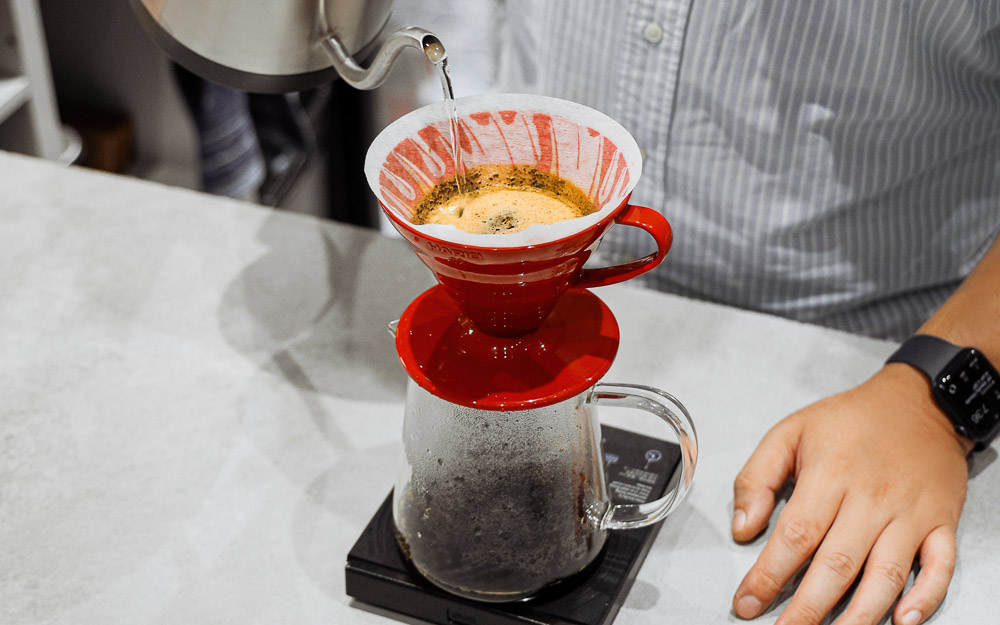
Emerging consumer trends
Assel Suleimenova and Zhemis Nurzhanova are the co-owners of Nurba’s Espresso Bar in Nur-Sultan.
“Espressos, cappuccinos, and americanos are the three most ordered beverages in our coffee shop,” they explain. “We mostly use dark roast Brazilian arabica, as well as locally roasted robusta, but we’re looking to source [other coffees] in the future.”
While instant coffee products, as well as concentrates, are still hugely popular in the country, Kazakhstan coffee culture is slowly embracing specialty.
A growing specialty coffee scene
Arina Ospanova is a co-owner of What Flat coffee shop in Almaty.
“The first specialty coffee roaster came to Karaganda, Kazakhstan from Russia in 2009,” she says. “Now, there is a growing number of specialty coffee roasters in Kazakhstan, especially in Almaty and Astana (Nur-Sultan).
“People are becoming more curious and want to try different varieties,” she adds. “At What Flat, consumers tend to enjoy Kenyan and Colombian coffees the most, along with Ethiopian coffees as espresso.
“There’s also a big demand for arabica and robusta blends,” she continues.
Aigerim Yermakhanova is Kazakhstan’s first certified Q grader. She is also a barista trainer and quality control specialist at Spectre Coffee in Almaty.
“Kazakhs usually drink coffee with milk, similar to how they drink tea,” she tells me. “Most coffee consumed in the country is instant, however, consumer preferences are evolving – more people are drinking roast & ground and specialty coffee.
“This is largely driven by the growing number of coffee shops in the country, which offer different roast profiles and origins,” she adds. “In turn, consumer awareness of high-quality coffee is growing.
“Many coffee consumers enjoy washed coffees, but they are also open to trying different and new processing methods,” she continues.
Almaz Ospanov is also a co-owner of What Flat.
“Experimentally processed coffees are becoming quite popular,” he says. “Customers ask about them frequently. Natural processed coffees are also a favourite among consumers.”
Who drinks the most coffee?
Stanislav explains that as with many other emerging specialty coffee markets, younger demographics and tourists are helping to grow specialty coffee culture in Kazakhstan.
“However, people of all ages are slowly becoming interested in specialty coffee,” he says. “My oldest customer is Nina Vasiliyevna, who is 81 years old.
“Her son-in-law introduced her to specialty coffee – she’s probably the oldest V60 brewer in Kazakhstan!” he adds. “I taught her how to use the V60 and follow James Hoffman’s recipe, and she has been using it diligently every day.”
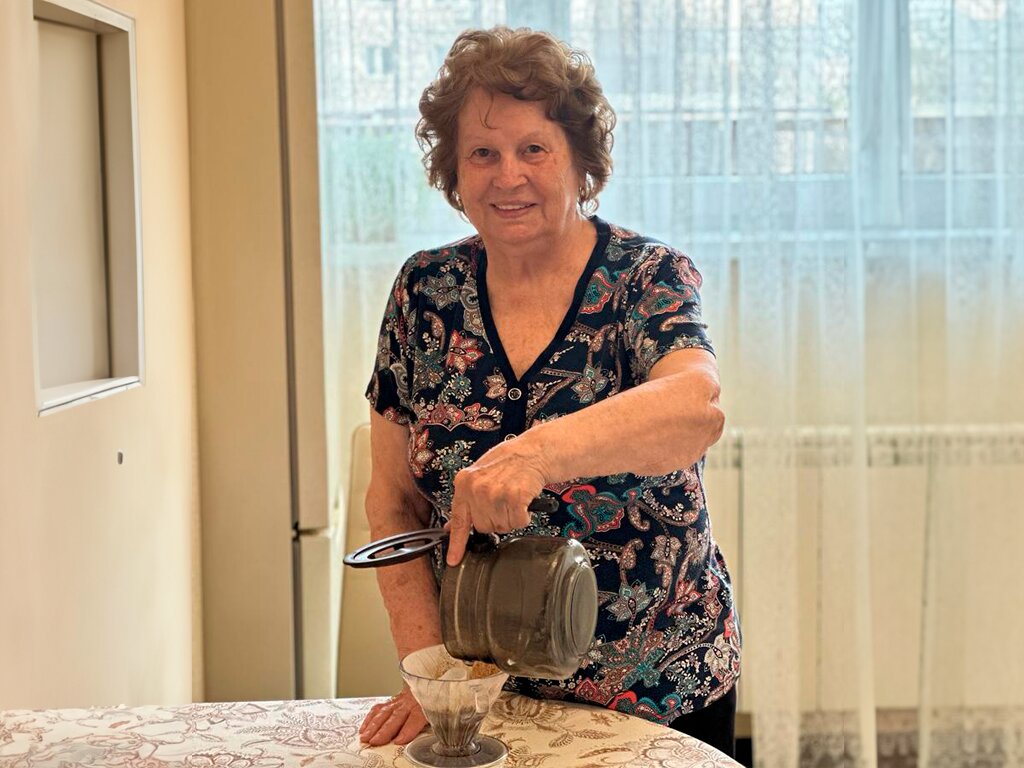
Nina explains why she enjoys brewing and drinking coffee.
“I love the Kenyan coffees I get from Stanislav,” she says. “I always used to drink tea but since being introduced to coffee, it makes me happy and gives me more energy.”
Similar to Nina, there is a growing number of home brewers and baristas in Kazakhstan. In recent years, it’s become easier to buy specialty coffee brewing equipment, and access to online resources has become more available.
Stanislav explains that social media plays a key role in disseminating information and inspiring more curiosity.
“Massimo Coffee is the only official supplier of AeroPress, Hario, Espro, and Comandante products in Kazakhstan,” he says. “We are seeing a big increase in the number of orders for these products, and about 40% of our sales are for filter roast profiles.”
What’s it like being a barista in Kazakhstan?
As coffee culture changes in Kazakhstan, we’re likely to see the role of the barista evolve, too.
Many Kazakh coffee professionals often move to the Middle East or Australia to train as baristas. When they returned to Kazakhstan, some of them open their own roasteries or coffee shops.
Rauan Zhumazhanov (also known as the “One Hand Barista”) is a coffee professional in Kazakhstan.
“I worked in Kazakhstan for four years, moved to Dubai for five, and then returned to Kazakhstan,” he says. “I won the regional Latte Art Championship in Dubai seven times, and I am also the 2019 Kazakh Latte Art Champion, as well as the 2019 UAE AeroPress Champion – I love what I do.”
However, it’s still not considered a long-term career path for many in the country.
“Like in many other parts of the world, being a barista is not considered an aspirational career goal in Kazakhstan,” Almaz says. “It is mostly seen as a job for students, while roasters are usually regarded as similar to any other business.”
Increasing focus on education
Wendelien van Bunnik is the 2019 World AeroPress Champion and founder of The Happy Coffee Network. She recently visited Kazakhstan to host an AeroPress brewing workshop.
“Going to Kazakhstan and meeting the Kazakh coffee community has been a highlight of my coffee career,” she tells me. “The country’s specialty coffee sector is still young, but I can sense an eagerness and curiosity to learn more that I haven’t seen for a long time.”
Alongside events like this, online resources are a pivotal part of growing interest in specialty coffee education.
“Barista training mostly happens on the job, but the internet has been a useful resource, and has helped us connect with coffee professionals around the world,” Arina says.
Rauan agrees, saying: “I learn a lot of barista skills from online courses and videos, especially how to pour latte art.”
Although Kazakhstan is still yet to open a recognised Specialty Coffee Association training campus, some of the country’s coffee professionals and enthusiasts travel to Russia or Turkey to become Authorised SCA Trainers or Q graders.
Moreover, there is a growing number of barista schools and training centres opening in Astana (Nur-Sultan) and Almaty.
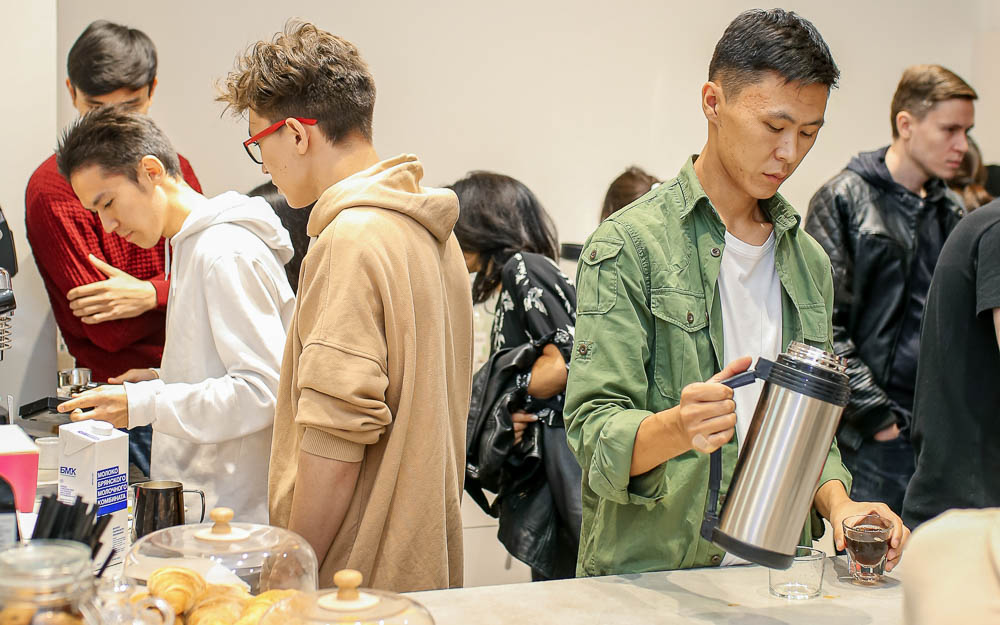
So what could the future hold?
Although Kazakhstan’s specialty coffee sector remains small, it is clearly an emerging market with potential for growth. With a rising number of tourists and expats entering the country every year, specialty coffee culture is expected to become more popular.
The current political climate brings challenges, however. With the ongoing war in Ukraine, sourcing coffee has been difficult – but it has also inspired more roasters and green buyers to buy green coffee directly from producing countries.
“In the past, the social and political conditions in Kazakhstan have been challenging at times, such as major riots in 2021 which impacted a lot of businesses,” Stanislav says. “However, the government supports coffee businesses by levying zero customs fees for green coffee with just a 12% VAT rate.”
Furthermore, with many Kazakh coffee professionals training in other parts of the world, and then returning to their home country, we’re likely to see more specialty coffee businesses open in the coming decades.
Coffee competitions are also becoming more popular, with local coffee shops and roasters in Almaty and Astana (Nur-Sultan) launching their own barista, latte art, and brewing contests. And while there are no formal Coffee Championships in Kazakhstan as of now, this could certainly change in the future.
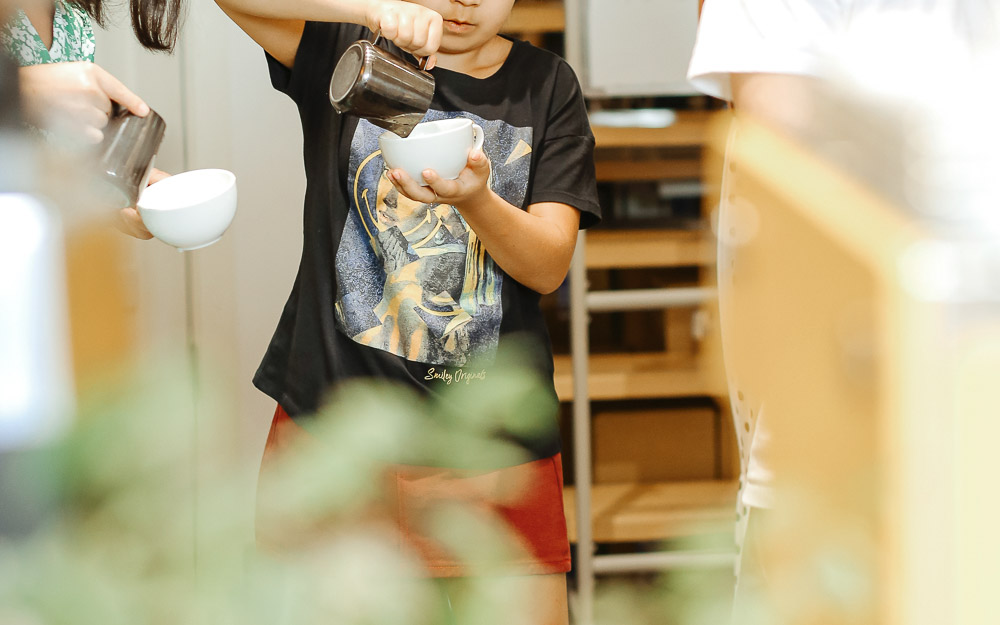
Kazakhstan is certainly still far from becoming a major coffee-consuming country. Its specialty coffee sector is also still in its infancy, but that’s not to say that it won’t become more popular over the next few decades.
With a growing emphasis on coffee education and competitions, it will be interesting to see how Kazakhstan’s coffee culture evolves in the years ahead.
Enjoyed this? Then read our article on Ukraine’s coffee scene.
Photo credit: Dalla Corte, Brew Battle, Kristine Karpeka
Perfect Daily Grind
Want to read more articles like this? Sign up for our newsletter!

